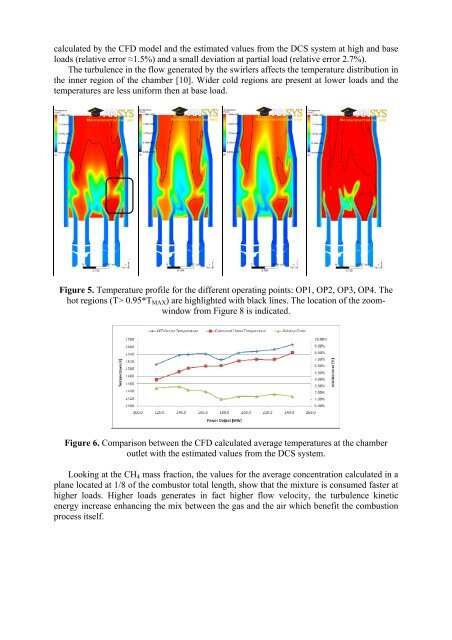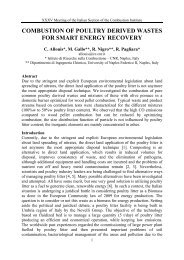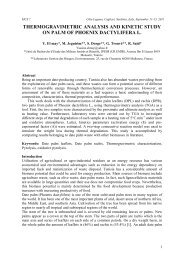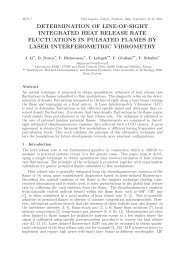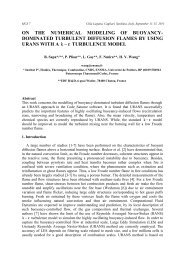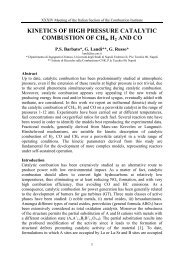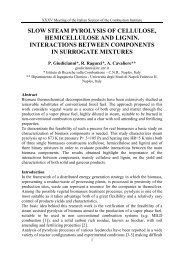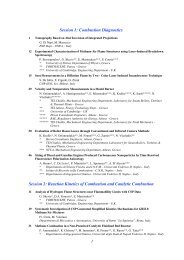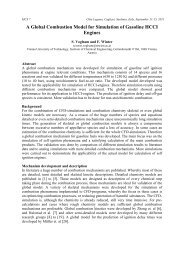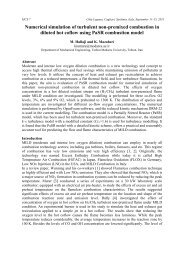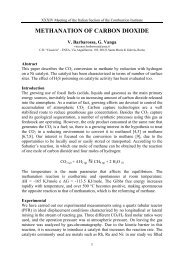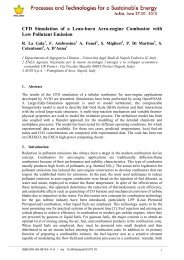Modelling of the heat transfer in a gas turbine liner combustor
Modelling of the heat transfer in a gas turbine liner combustor
Modelling of the heat transfer in a gas turbine liner combustor
You also want an ePaper? Increase the reach of your titles
YUMPU automatically turns print PDFs into web optimized ePapers that Google loves.
calculated by <strong>the</strong> CFD model and <strong>the</strong> estimated values from <strong>the</strong> DCS system at high and base<br />
loads (relative error ≈1.5%) and a small deviation at partial load (relative error 2.7%).<br />
The turbulence <strong>in</strong> <strong>the</strong> flow generated by <strong>the</strong> swirlers affects <strong>the</strong> temperature distribution <strong>in</strong><br />
<strong>the</strong> <strong>in</strong>ner region <strong>of</strong> <strong>the</strong> chamber [10]. Wider cold regions are present at lower loads and <strong>the</strong><br />
temperatures are less uniform <strong>the</strong>n at base load.<br />
Figure 5. Temperature pr<strong>of</strong>ile for <strong>the</strong> different operat<strong>in</strong>g po<strong>in</strong>ts: OP1, OP2, OP3, OP4. The<br />
hot regions (T> 0.95*T MAX ) are highlighted with black l<strong>in</strong>es. The location <strong>of</strong> <strong>the</strong> zoomw<strong>in</strong>dow<br />
from Figure 8 is <strong>in</strong>dicated.<br />
Figure 6. Comparison between <strong>the</strong> CFD calculated average temperatures at <strong>the</strong> chamber<br />
outlet with <strong>the</strong> estimated values from <strong>the</strong> DCS system.<br />
Look<strong>in</strong>g at <strong>the</strong> CH 4 mass fraction, <strong>the</strong> values for <strong>the</strong> average concentration calculated <strong>in</strong> a<br />
plane located at 1/8 <strong>of</strong> <strong>the</strong> <strong>combustor</strong> total length, show that <strong>the</strong> mixture is consumed faster at<br />
higher loads. Higher loads generates <strong>in</strong> fact higher flow velocity, <strong>the</strong> turbulence k<strong>in</strong>etic<br />
energy <strong>in</strong>crease enhanc<strong>in</strong>g <strong>the</strong> mix between <strong>the</strong> <strong>gas</strong> and <strong>the</strong> air which benefit <strong>the</strong> combustion<br />
process itself.


